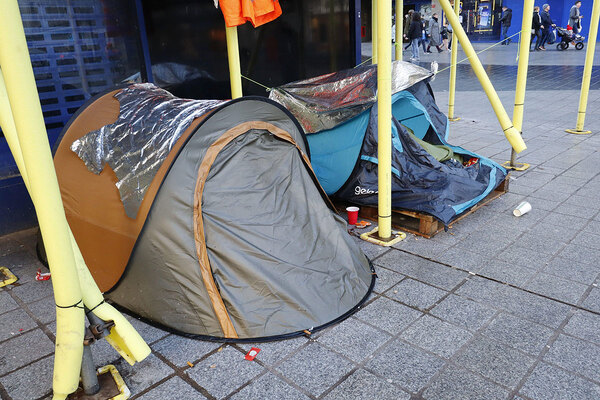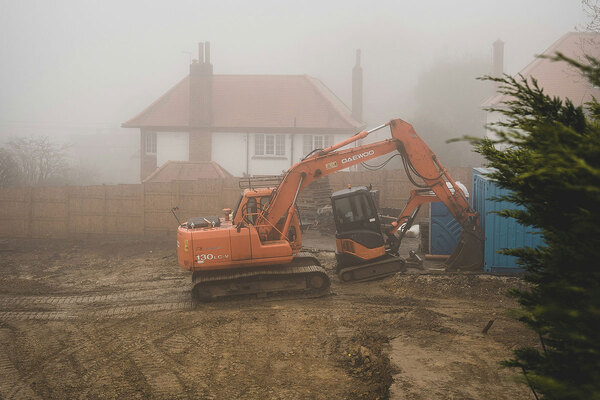 Jules Birch
Jules BirchJAMs and NOMADs
 Jules Birch
Jules BirchWednesday?s Autumn Statement by Philip Hammond is good news for housing on several different fronts.
First, at long last housing is being recognised as infrastructure. That?s important enough in itself but Mr Hammond went even further by pitching housing as part of the solution to the key economic problem of productivity.
Along with transport, digital communications and research and development, housing will be part of the chancellor?s ?23bn National Productivity Investment Fund. In financial terms, accelerated construction, affordable housing and the new Housing Infrastructure Fund represent a third of the total cost.
Mr Hammond also named ?the housing challenge? alongside the productivity gap and the imbalance in prosperity across the country as one of the economy?s long-term weaknesses.
Second, the government has acted at last to stop letting agents from charging outrageous fees to private renters. After years in which successive ministers resisted any interference in the free market, housing minister Gavin Barwell deserves congratulations for looking at the evidence and changing his mind (or perhaps convincing others to change theirs).
Third, the ?1.4bn for affordable homes does seem to be new money and it will also mean a return to the development of affordable rented homes largely abandoned by George Osborne in 2015.
Part of the money will go on increasing flexibility of provision for housing associations with not much more detail available in the main statement. However, forecasts released by the Office for Budget Responsibility (OBR) assume that there will be a ?sharp? reduction in shared ownership in favour of affordable rent and rent-to-buy.
Fourth, regime change in Downing Street has allowed the new ministers to junk some of their predecessors? worst ideas. Compulsory Pay to Stay for council tenants was scrapped on Monday and the OBR?s forecasts imply that it could even disappear in its voluntary form.
Speaking of bad ideas, the Autumn Statement did not even mention Starter Homes and higher-value council sales. Is it too much to hope a rethink is also happening on those, too? The announcement of a full-scale regional pilot for the extension of the Right to Buy, with a cost to the Treasury that peaks in 2020, shows there is no rush on that either. The OBR report is again interesting with the revelation that there will be a further consultation on the ?key parameters? of the policy.
With the Housing White Paper still to come, there could yet be more good news and some of the blanks will no doubt be filled in. It?s just a shame that all of this took so long. But there was also some bad news in the Autumn Statement and it still has to be seen in the context of everything that?s happened (or hasn?t happened) in the past six years.
First, despite the focus on delivery, the OBR report forecasts that housing associations will build 13,000 fewer homes over the next five years, mainly as a result of lost revenue from shared ownership and Pay to Stay.
Second, the new Affordable Homes Programme does not quite justify the #morehomesofeverytype hashtag used by Mr Barwell in a tweet that listed affordable rent, shared ownership and rent-to-buy but not social rent.?? ?
And any extra funding and flexibility has to be seen in the overall context of the balance of total government support for housing. In June the UK Housing Review update quantified the total value of grants, loans and guarantees going to different forms of housing from 2015/16 onwards. Affordable and social rent got just ?2bn, compared with ?6.4bn for low-cost homeownership and ?36bn to support the private market.
Third, it was the same story when it came to what was meant to be the main point of the Autumn Statement: help for JAMs ? the families who are ?just about managing?. Yes, the taper rate for Universal Credit was increased, in effect a tax cut targeted on them, but they will lose far more than that from last year?s cut to the work allowance.
Yes, the ban on letting agent fees and the extra money for affordable housing should help but recent research by Shelter shows that there are 830,000 working families in private renting who cannot afford any of the government?s homeownership schemes. Many different forms of rent-to-buy and buy-as-you-go have been proposed, some more affordable than others.
Finally, if the JAMs have problems, what about the people I?ll call NOMADs ? ?not managing and in difficulty??
The Autumn Statement will make no difference at all to families facing up to the benefit cap and do nothing to encourage landlords to house them. The Local Housing Allowance cap is still a looming problem, especially for single people under 35, and it?s still not clear whether the latest announcements will be enough to convince providers of supported housing to carry on investing. And claimants whose benefits are frozen until 2020 face an even harsher version of the diet they?ve had since 2010: no jam today or tomorrow.?







